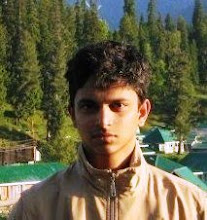NoMoZo debuts in Goa, pedestrians grab right of way from cars
Nigel Britto
One of Panaji's busiest roads took a day off from its grueling schedule and donned a party hat as friends and families comprising the old and the young descended upon it for a few hours of community bonding on Sunday. Enthusiastic policemen studiously kept vehicles at bay as cyclists, skaters, pedestrians, quizzers and artists made the road their own, under the silent, peaceful gaze of Campal's famously shady trees.
Even the birds, usually happy to poop on random passers-by below, disciplined themselves for those few hours as people from in and around Panaji dragged themselves out of bed on a Sunday morning and gathered at the stretch of road between Kala Academy and 2 Signal Training Centre. While the entire section was cordoned off, most of the activity was concentrated along side the Konkan Fruit Fest in Campal, which provided added impetus to the citizens' initiative by diverting attention during those inevitable drab moments. The rest of the open road was put to good use by first-timers trying their luck with roller-skating.
The event, conceptualized by 'Aamchi Panaji' to deal with excessive vehicular movement in the capital city, was wholeheartedly backed by the Corporation of the City of Panaji. Its success was largely due to an enthusiastic citizenry who assembled there with all kinds of things-bicycles, tricycles, roller skates, badminton rackets and cricket bats. The Sunday Evening Quiz Club conducted an informal quiz that had its participants sprawled on the open road; enthusiastic young cricketers turned the road stretch outside the old GMC building into a temporary pitch; somewhere down the road, a badminton game was in progress. Cycling and skating novices were given a heads-up from more experienced folk, and those standing around the quiz group exercised their grey matter.
And it wasn't just adults; kids, too, pranced happily along the road. While their parents browsed through the Konkan fruit fest buying squashes and home-made wines, bicycles and tricycles emerged as their young riders made the most of the open space. A small stall dished out free goodies to anyone that cared to stop by; little children moved around on tricycles; a bicycle club organized a slow cycling race.
Several people TOI spoke to expressed their desire that this should be made a regular event. But getting people together was not an unintentional consequence. "Our aim is to make Panaji a better city," said Tallulah D'Silva of 'Amchi Panaji'. "And part of the plan is to get people together and to get them to know each other."
Those who missed it, fret not. 'Aamchi Panaji' is planning a similar NoMoZo on June 18 on a famous street in Panaji. Guessing which street it is isn't really that difficult.
This article was first published on The Times of India's Goa edition on May 14, 2012.

